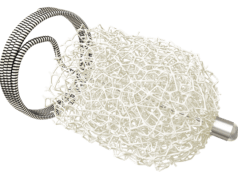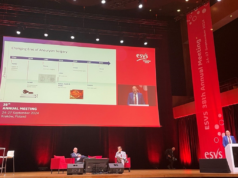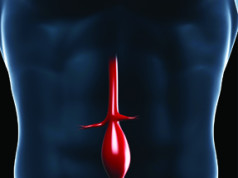
Preliminary results from the INNOVATION study indicate that Cordis’s Incraft stent graft is not associated with any type Ia or type III endoleaks at three years for patients undergoing endovascular aortic aneurysm repair (EVAR). They also show that the device is associated with a freedom from sac increase rate of 95.6%.
Presenting data at the VEITHsymposium (18–22 November, New York, USA), Giovanni Pratesi (Department of Biomedicine and Prevention, Unit of Vascular Surgery, University of Rome, Rome, Italy) commented that the Incraft device was designed to address the limitations of previous endograft system. He added that it had a low profile to simplify access, navigation, and deployment.
The objective of the INNOVATION study, therefore, was to “assess the technical success and safety” of the Incraft system in patients with abdominal aortic aneurysms. In the multicentre, open-label, prospective, non-randomised study, 60 patients underwent EVAR (at six sites across Germany and Italy) with the system. They were followed-up at discharge, one month, three months, six months, and annually thereafter (up to five years). The primary endpoint was deployment at the desired location, the absence of endoleaks at the end of the procedure, and the absence of device- or procedure-related major adverse events at one month post procedure. Major secondary endpoints included absence of aneurysm enlargement of ≥5mm, absence of stent graft migration of ≥10mm, quality of life, absence of stent graft fracture, and absence of endoleaks and major adverse events at the study’s follow-up points. According to Pratesi, the anatomy of the patients in the study was “significantly challenging”. For example, mean infra-renal angle was 34.4 degrees, mean proximal neck was 22.3mm, mean neck length was 26.9mm, and mean maximum aortic aneurysm diameter was 52.6mm.
As previously reported by Vascular News, there were no endoleaks (type I or III) at the two-year follow-up point and the freedom from major adverse event rate was 88.9%. Also, the rates of freedom from migration, freedom from fracture, and freedom from sac enlargement were all 100%.
At three years, follow-up data were available for 45 patients. No were patients were found to have a type Ia or type III endoleak, but two patients were found to have a type Ib endoleak (both of whom required re-intervention). The freedom from migration rate was 100%, the freedom from sac enlargement rate was 95.6%, and the freedom from major adverse events rate was 87.3%. Pratesi commented that one patient had a stent graft fracture, but added that this resulted in “no clinical consequences.” He added that, at three years, there was a significant reduction in aortic aneurysm diameter of up to 15mm, with a mean reduction from more than 55mm at baseline to 48mm.
Pratesi concluded: “The new customisable, ultra-low profile Incraft stent graft system introduces unique features in EVAR stent graft technology and has been demonstrated to be accurate in placement and comfortable in challenging anatomies.” He added that an ongoing US/Japan study of Incraft has completed enrolment and is currently in follow-up.













